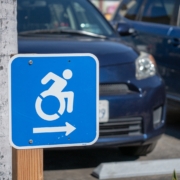Disability Awareness Dates to Know
Facility operators and owners must address ADA compliance to accommodate people with disabilities—but did you know there are days, weeks, and months to raise awareness of various disabilities and related matters? One is International Day of People with Disabilities on December 3rd, and, with about 15% of the world’s population living with disabilities, it makes sense to have a day honoring them.1 However, there are many dates you should know about, including:
January 4: World Braille Day
Officially designated by the UN General Assembly in 2018, World Braille Day raises awareness of how important braille is as a means of communication, and recognizes the rights of blind or partially sighted individuals. It also commemorates the birthday of Louis Braille, born in 1809. In 2020, the World Blind Union urged all countries to support the Marrakesh Treaty, to improve access to braille and other accessible reading materials in less developed countries and during the COVID-19 pandemic.
March 1: International Wheelchair Day
Honors the positive impact of wheelchairs on those who rely on them. International Wheelchair Day was founded in 2008 by Steve Wilkinson, a wheelchair user born with Spina Bifida. His mission, which included starting this annual commemoration, also created “Wheelchair Ambassadors,” a network of people with disabilities, family members, and professional caregivers that helps meet wheelchair users’ accessibility needs around the world.
In partnership with Whirlwind Wheelchair, he also helps fulfill the needs of millions of people who can’t access or afford a wheelchair.
April 25, 2020: Show Your Mettle Day

The last Saturday of April is a day of Limb Loss Awareness. As of 2021, April is Limb Loss and Limb Difference Awareness Month. It is intended to encourage individuals to show off their “mettle,” or any prosthesis, wheelchair, cane, or mobility aid they use.
Show Your Mettle Day is built on an initiative created by Boston Marathon bombing victim and amputee Peggy Chenowith, and adopted by the Amputee Coalition, which hosts various awareness events around the country. The organization has promoted Be Strong Daily Dares in which people post their activities on social media.
Third Thursday in May: Global Accessibility Awareness Day (GAAD)
Set for May 20, 2021, Global Accessibility Awareness Day promotes digital access and inclusion for anyone with a disability or impairment. It is focused on digital technologies, including software, the internet, and mobile devices and the use of assistive products to accommodate those who can benefit from them.
Launched in 2012, the initiative was co-founded by web developer Joe Devon and Jennison Asuncion, a Toronto-based accessibility professional. Activities have included online-only events to raise awareness, featured speakers, and, in 2017, a website accessibility testing clinic.
July 26: National Disability Independence Day
This day commemorates the signing of the Americans with Disabilities Act (ADA) on July 26, 1990. Honoring the ADA’s requirements for public accomodation and prohibiting discrimination, this awareness day is celebrated on social media and with special events. It is also used to promote ADA training and certification, as well as podcasts, workshops, and webinars on ADA compliance requirements.
International Week of the Deaf
September 21-25, 2021 is the International Week of the Deaf, which is held annually in the last week of September. It commemorates the first World Congress of the World Federation of the Deaf in 1958. Promoting human rights for the hearing impaired, it is celebrated by enabling individuals to tell their stories. The International Day of Sign Languages has been part of this awareness initiative since 2018.
October 15: White Cane Safety Day/Blind Americans Equality Day
This day of national observance received its latter name by President Barack Obama in 2011. It has been celebrated on October 15th since 1964 and highlights the achievements of blind/visually impaired individuals; it was signed into law by the U.S. Congress that year. The white cane is a symbol of blindness and independence.
1991: Introduction of Detectable Warning Surfaces

The ADA was expanded in 1991 to require detectable warnings on sidewalks, crosswalks, and platforms where there were transitions to motorways. Assigned to oversee compliance, the Department of Justice later suspended detectable warning requirements to permit research into alternative designs. This suspension expired in 2001, as research showed truncated domes were the most effective at meeting ADA compliance standards.
Order ADA Detectable Warning Surfaces
ADA Solutions manufactures and supplies heavy-duty, UV-stable, fiberglass polymer composite detectable warning surface tiles to help facilities meet ADA compliance requirements. Our exclusive products include cast-in-place and surface-applied panels, as well as solutions designed specifically for transit platforms. To obtain more information or receive a free quote, contact us online or call 800-372-0519 today.
Source:







